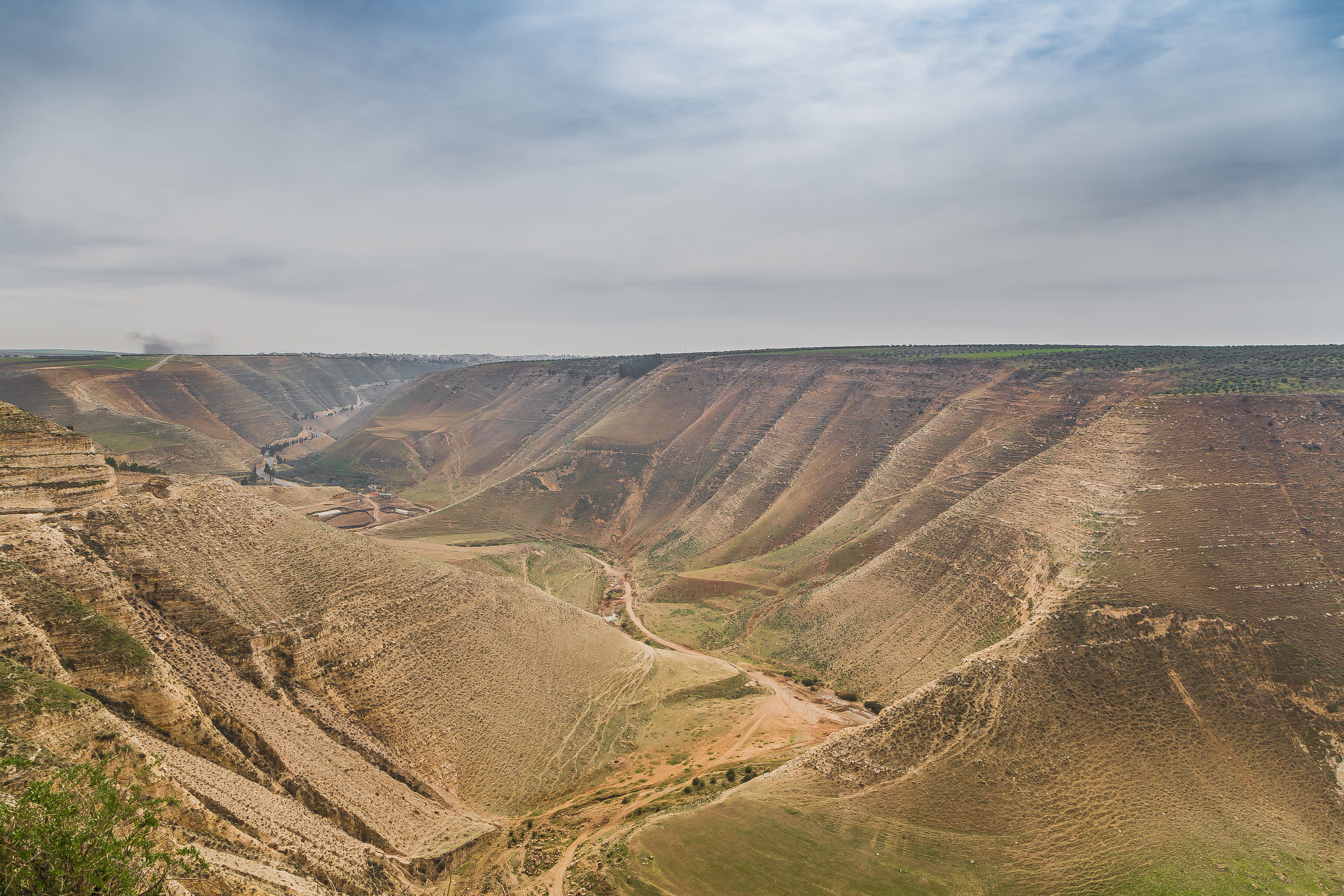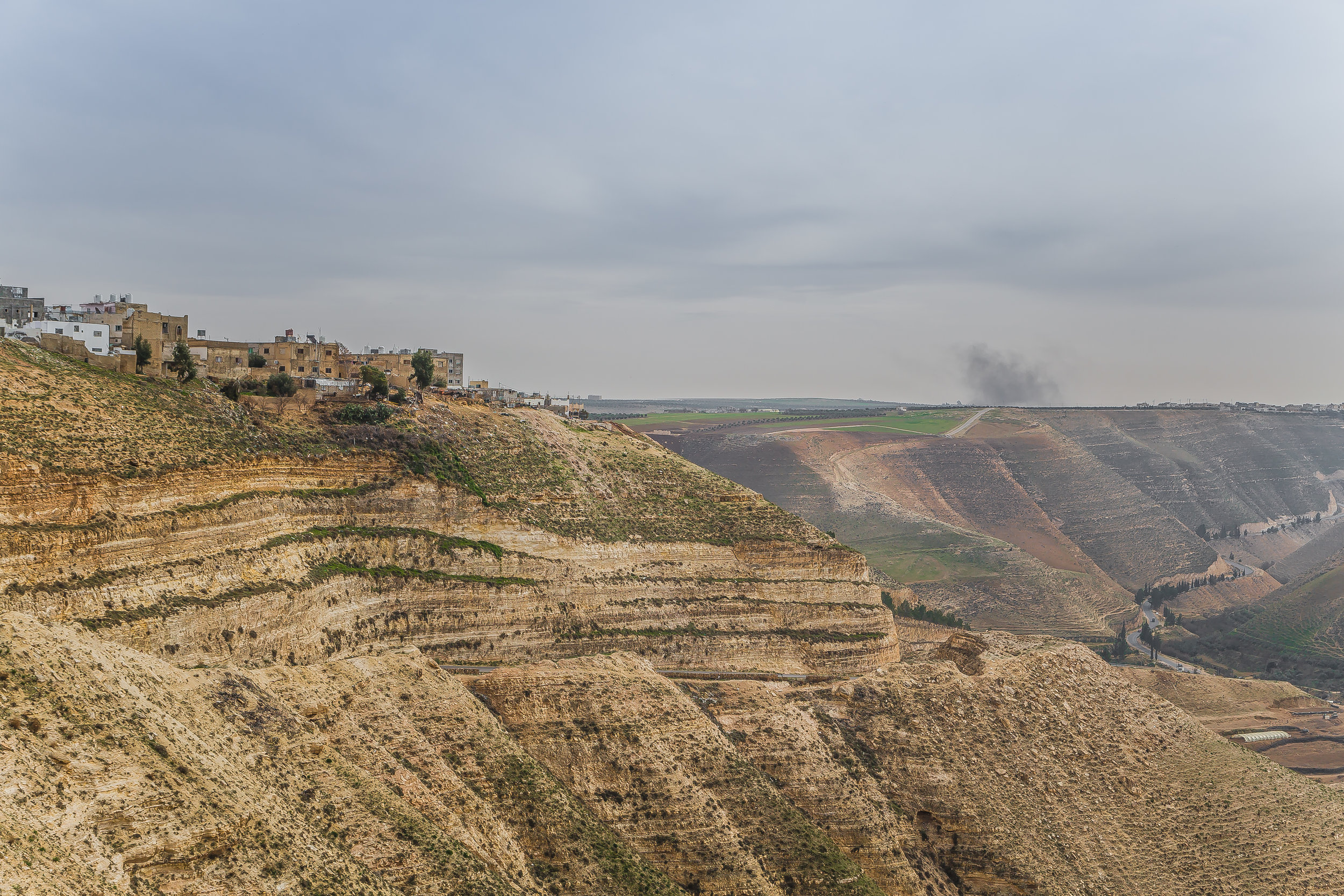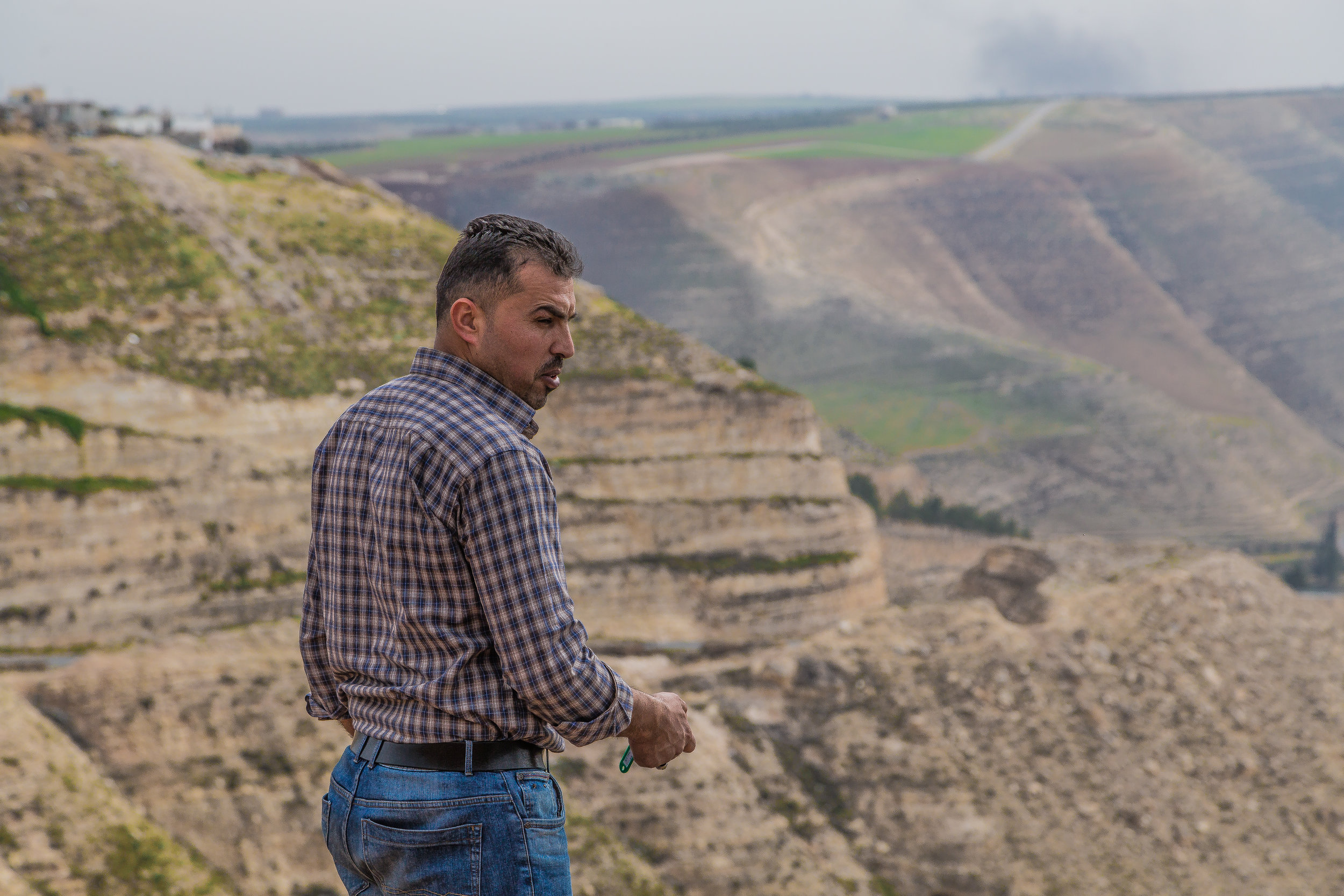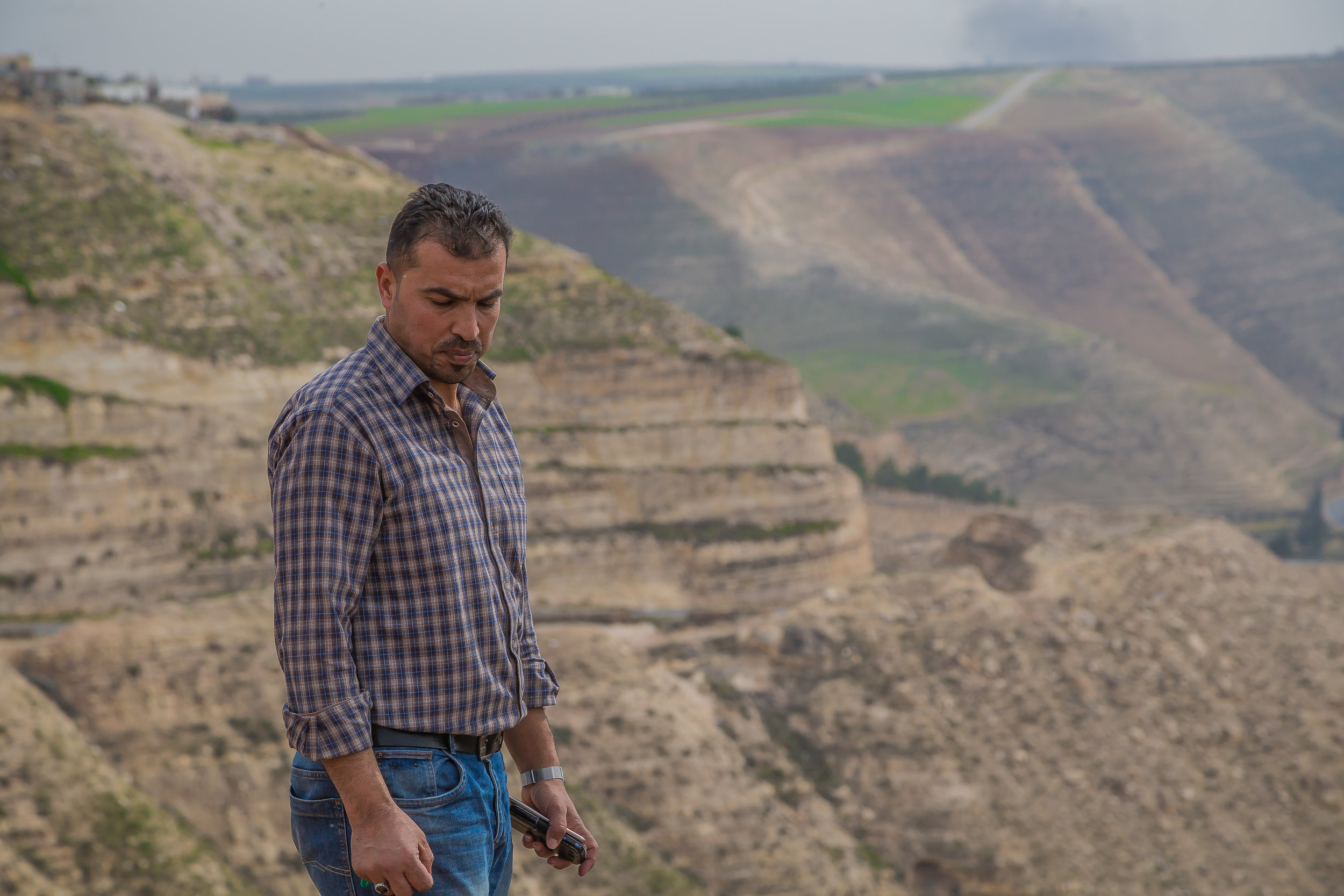MY TIME WITH MERCY CORPS
My time at the international non-profit organization, Mercy Corps, was enlightening and experiential. It was extremely important that I had the chance to explore the world of photojournalism. I had wanted to be reporting on the front lines of issues I am connected to, in order to continue seeing things from the ground and up close while trying to capture the story in any which way.
The next three months were definitely life changing. I got to travel all across Jordan; to places I’ve never seen before; some like places that had known splinter cells in the area, and other areas where the refugees were fleeing away from militants or war torn homes abroad. I met many people and had the humbling opportunity to listen to their side of the story, which allowed me access to cover areas of the larger conversation not focused on in the mass media. I was allowed to create more personalized stories.
MY FIRST TASKS
At first I was tasked with a simple, yet different, type of photography than I'm typically used to. I was to go out and take photographs for their 'before and after' images that Mercy Corps puts together to show their donors and partners.
I was grateful to eventually have the assignments change often, so it was not a situation in which I photographed the same image over and over again. Soon I began traveling the country of Jordan regularly; going anywhere between North, South, East, and West at any given time during the week.
COMMUNITY LEADERS
Community Leaders: are people who are selected by the Mercy Corps team during the training programs, and then go on to become the bridge between local communities and the Mercy Corps organization. A Mercy Corps community leader can be anyone who passes the program and fits the requirements and leadership standards that Mercy Corps have.
Young adult community leaders are taught how to write proposals as well as prepare and give presentations to Mercy Corps officers and also public figures and local government officials alike. They are also taught how to spot certain kinds of behavioral that may lead to further social disruption or even radicalization. The leaders learn how to gather demographic information then design and present it to Mercy Corps and community officials in a way that sheds light on people in the neighborhood who are in need.
There are young community leaders too who work locally in schools and in other educational areas. They are taught by Mercy Corps how to use computers, read and write poetry, make jewelry and pottery, and especially learn the importance of recycling. These amazing programs are designed to inculcate the child in an environment where caring about the environment and ones own artistic journey i seen as a norm of life.
MA’AN JACKET DISTRIBUTION
I was on a photography assignment to capture the events at a local community center in Ma'an as Mercy Corps field agents distributed free jackets to the children in attendance.
One of the very important things I learned about the refugee situation in Jordan is that: there are some heavy tensions between the Syrians and the Jordanians. One of the many deep rooted problems Mercy Corps was aware of was that many other NGO'S prioritized their attention and resources to Syrian children over impoverished children at an in equal ratio. These other NGO’s also seemed to slightly overlook any other children not considered “refugees”, but still in high risk zones across Jordan.
For example, the reference told to me when I asked my colleagues to explain the situation further, was phrased anecdotally like this: a Jordanian child would go to school and see the Syrian child with what seemingly looked like new shoes, shirt and a backpack and the Jordanian child would go home and tell his/her mother that the Syrian child got new shoes and the like, but not them. This understandably makes the child protest in anger, that no one of authority takes his/her (or the family’s) suffering seriously! Now, while this may not be true, yet it does indeed further influence the collective distrusting perception of NGO's and their not too distant counterparts, the government.
This led Mercy Corps to change their behavior and realize the pitfalls of their fellow organizations. One of the ways that Mercy Corps was to able to fix this unconscious dogmatism was to distribute jackets to all children in need within a certain community, rather than ones with a certain country of origin or refugee label.
These events, classes or parks were proposed, designed, built and maintained by the Community leaders. Mercy Corps would collect the funds from their doners and then distribute them among the community leaders in order for them to pursue the project they had in mind, if it was to benefit society and approved by Mercy Corps first.
The drive to Ma’an was far, about 3 and a half hours to 4 and a half hours depending on rout, construction detours, accidents, and anything else that could bog up traffic.
For many Jordanians in Amman it may sound weird to think of traffic on these outskirts roads of the desert, but it only takes one major accident and 2 lanes are easily blocked up.
I was excited to be apart of a project that was directly giving back to the community and offering jackets to kids during a particularly harsh winter; not all of the children were refugees but all of them needed it.
I met a fellow photographer from France by the name of Arthur, he was working in Jordan with many other NGO's and it was his main form of income, while also portraiture on the side every now and again. We began meeting all across Jordan when our assignments would coincide. I believe we worked very well together, as we shot I could remember how it was like to shoot commercial jobs with friends in Chicago and how developing a certain kind of unspoken flow will revitalize you.
There was a small meeting held in order to remind the kids the necessity to stay warm and hygienic during the rough winter to come, and always take care of those around you by taking care of yourself first, to the best of your ability. There were many young kids, I suppose, who were very young and excited to go back out and play during a day that was not too cold. They were also eager to try out their new Jackets.
Mercy Corps and the comunity leaders of Ma’an had also made time for (and provided) lunch!
And of course many thanks goes to The Mercy Corps team in charge of the Ma’an district as well as the Ma’an Community Leaders for their ability to get together and effectively make this happen for the children, before the harshness of winter came.
Al SHAJARA - NORTHERN JORDAN/SOUTHERN SYRIA
During a routine trip to a small town near the Syrian border called “Al Shajarah” (roughly translated in English to ‘The Tree’) my supervisor and a field agent in charge of communications and outreach in that neighborhood took a detour to see a very large and majestic canyon landscape, one that covered the whole scenery.
As we approached the crevasse we could hear the echoes of life from within the valley, the sheep that belonged to the herders and farmers and Bedouin families alike who lived within the walls of the valley. Their lively hoods hold a very distinct audio signature.
Yet, all of a sudden in the distance I saw a plume of smoke. Both my supervisor and the field operative had noticed the change in my face. As they both turned around to see what I was looking at the plume of smoke became bigger.
“An explosion.” My supervisor said. I had no Idea we were really that close to the Syrian border. We had a moment of silence, we let the gravity of the moment settle on our shoulders, and then we proceeded to get back into the car and continue on to photograph the progression of the new construction of schools and parks in the community.





AJLOUN SAKHRA SOCCER FIELD
Yet this was not all Mercy Corps did, not even close. Some of the funding goes to building community centers such as parks and soccer fields for the youth. One of the soccer fields in a community by the name of Al Sakhra (roughly translated to ‘The Rock’) had been doing very well during the past year, and Mercy Corps had brought together the towns youth together to play a soccer match would help build a connection through social cohesion.
I was very fortunate to be given the assignment to shoot and edit what they at the Mercy Corps social media department called a success story.
A success story is when Mercy Corps does or creates something for a community and then the community members take over and exceed expectation.
As soon as they asked me to create this video, I decided to switch up the visual style entirely from their unintentional aesthetic of mobile phone looking clips stitched together, to something more cinematic. I was excited to change up the visual pallet.
GEAR TALK
At first I had chosen to shoot the main game mostly at 60 frames per second, to achieve the best combination of quality and slow motion on my Canon 5D Mark III could offer. I knew I wanted to play with time remapping in the post production process, yet I also knew the 5D Mark III shot at 720p resolution when shooting at 60 frames per second. This meant that the quality of the slow-motion footage would not be as great as he standard 24 frames per second 1080P output the video was going to be finalized at.
This was a small shoot with a quick turnaround time so I had to adjust the workflow. Instead of round-tripping the final cut into Black magics Davinci Resolve software for color grading, I decided to continue the color finishing process in Premier Pro.
THE SOCCER MATCH
JEWELRY EDUCATION IN NORTHERN AJLOUN
One of the things I admired about the Mercy Corps brand was their devotion to education rather than just donation.
After the earthquake in Haiti hundreds of NGOs began large scale donations which gave the illusion of success; but upon not having an exit strategy, when the NGOs left, Haiti became worse than it was after the earthquake as the people had become extremely dependent.
A simple way that Mercy Corps transcended this problem was by focusing on making sure that while they build the new facilities or provide the new amenities for the government, they also teach the people of the town for free on how to use, maintain, and update the facilities when need be. Another way of helping people reach individual dependency is by holding classes in the sciences and arts that translate perfectly into real world applications.
MERCY CORPS Graduation from Advanced Jewlery Making class.
In the large municipality of Ajloun, up north towards the forest filled nature reserve known as Dibeen forest in a small neighborhood called ‘Al Sakhra’; Mercy Corps teaches young women how to make bracelets during a free course that spans over a few weeks. Once the women have a proficiency of creating very cool and alluring jewelry they then have the option of continuing to take a marketing class which is heavily based on social media marketing (something the women could do at home on their own free time) to essentially market and sell that which they made.
MA'AN AND ENGLISH REPRESENTATIVE HOLD MEETING
The reasoning behind this meeting was largely to asses the new park that Mercy Corps had built with the people of Ma'an. I was sent to go photograph the event. Personally I loved the park, it came with its old library. Now, as I mentioned before, after two years the updates and maintenance is up to the democratically appointed and Mercy Corps vetted people of Ma'an to continue the success story legacy.
This meeting went so well that there was enough time to go back and discuss further improvements to the Governorate of Ma'an to help bring its youth more to do in turn keeping them away from drugs and ISIS sympathizers (which are have a heavy influence in the northern parts of Ma'an as well as scattered throughout).
AL DAJANYA RECYCLING WORKSHOP
In a school far away, there is a group of teachers who have worked closely with the Mercy Corps field operatives in order raise the ecological awareness within young boys and girls.
I enjoyed listening to the talks given by the person who was chosen for the job of educating the youth. He gave the children time to go out and scavenge for garbage in their school (specifically plastics, wood, wrappers and packaging, and other relatively safe things).
Next, their task was to analyze what they brought in and figure out what is the composition of that they just brought in.
They were, at the same time, taught how long their individual piece of trash would remain on this earth, if left unattended.
Then they were to see during that time how the chemicals could ruin the soil, air, and other major factors of our existence.
These sessions were once a week, when all kids could make it together. Each meeting they would either work in groups, or alone, scavenge in teams or all together. The method of teaching was very fluid and adaptable to the students needs, also it followed a loose rhythm every child seemed to tremendously work well with.
Every child respected the other as an equal and they all felt comfortable to engage in public discourse.























